Octopuses are amazing sea creatures. They belong to a group called molluscs, just like snails and clams. But unlike them, octopuses have no shell. They have soft bodies, eight arms, and big brains. There are over 300 known species of octopuses in the world. They inhabit oceans worldwide, ranging from shallow waters to the deepest sea trenches. Octopuses are full of surprises. They can change colour to hide from enemies. Some even glow in the dark! They squeeze through tiny spaces and escape predators with a cloud of ink. They are smart too—some can open jars and solve puzzles.
Now, here's a fun question: do you know which is the largest octopus ever found on Earth? It's a record-breaking creature with incredible size and strength. In this article, we'll take a closer look at this giant of the deep and explore what makes it so special.
List of the Largest Octopuses in the World
The largest octopus in the world is the Giant Pacific Octopus (Enteroctopus dofleini). This massive cephalopod lives up to its name, thriving in the cold, nutrient-rich waters of the North Pacific Ocean, from California up to Alaska and across to Japan.
While the average adult typically weighs around 50 pounds (22.7 kg) with an arm span of up to 14 feet (4.3 meters), exceptional individuals have been recorded at nearly 600 pounds (272 kg) with an arm span reaching 30 feet (9 meters).
Beyond its imposing size, the Giant Pacific Octopus is renowned for its intelligence, possessing a complex, folded brain and the ability to change its skin colour and texture for remarkable camouflage rapidly. It is a solitary predator, primarily hunting crustaceans, molluscs, and fish at night.
| Rank | Species | Scientific Name | Maximum Weight | Maximum Length | Habitat |
| 1 | Giant Pacific Octopus | Enteroctopus dofleini | 272 kg (600 lbs) | 9 m (30 ft) | North Pacific Ocean |
| 2 | Seven-Arm Octopus | Haliphron atlanticus | 75 kg (165 lbs) | 3.5 m (11 ft) | Atlantic & Pacific Oceans |
| 3 | Frilled Giant Pacific Octopus | Enteroctopus dofleini variant | 110 kg (242 lbs) | 5 m (16 ft) | Alaska, N. Pacific |
| 4 | Māori Octopus | Macroctopus maorum | 12 kg (26 lbs) | 4 m (13 ft) | New Zealand, Australia |
| 5 | Southern Giant Octopus | Enteroctopus magnificus | 25 kg (55 lbs) | 2 m (6 ft) | S. Africa, Namibia |
| 6 | Common Blanket Octopus | Tremoctopus violaceus | 10 kg (22 lbs) | 2 m (6.5 ft) | Tropical S. Atlantic |
| 7 | Common Octopus | Octopus vulgaris | 10 kg (22 lbs) | 1.3 m (4.3 ft) | Worldwide |
| 8 | Dumbo Octopus | Grimpoteuthis spp. | 6 kg (13 lbs) | 1.8 m (6 ft) | Deep seas worldwide |
| 9 | Yellow Octopus | Enteroctopus zealandicus | 5 kg (11 lbs) | 1.4 m (4.6 ft) | New Zealand |
| 10 | Southern Red Octopus | Enteroctopus megalocyathus | 4 kg (9 lbs) | 1 m (3.3 ft) | Chile, Argentina |
| 11 | North Atlantic Giant Octopus | Enteroctopus spp. | 75 kg (165 lbs) | 2.4 m (8 ft) | North Atlantic |
| 12 | California Two-Spot Octopus | Octopus bimaculoides | 4–8 pounds (2–4 kg) | 1.8 m (6 ft) | California, Pacific Coast |
| 13 | Caribbean Reef Octopus | Octopus briareus | 1.5 kg (3.3 lbs) | 0.6 m (2 ft) | Western Atlantic, Caribbean |
| 14 | Atlantic White Spotted Octopus | Callistoctopus macropus | 2 kg (4.4 lbs) | 1.5 m (5 ft) | Tropical & Temperate Waters |
| 15 | East Pacific Red Octopus | Octopus rubescens | 0.4 kg (0.9 lbs) | 0.4 m (1.3 ft) | East Pacific Coast |
1. Giant Pacific Octopus
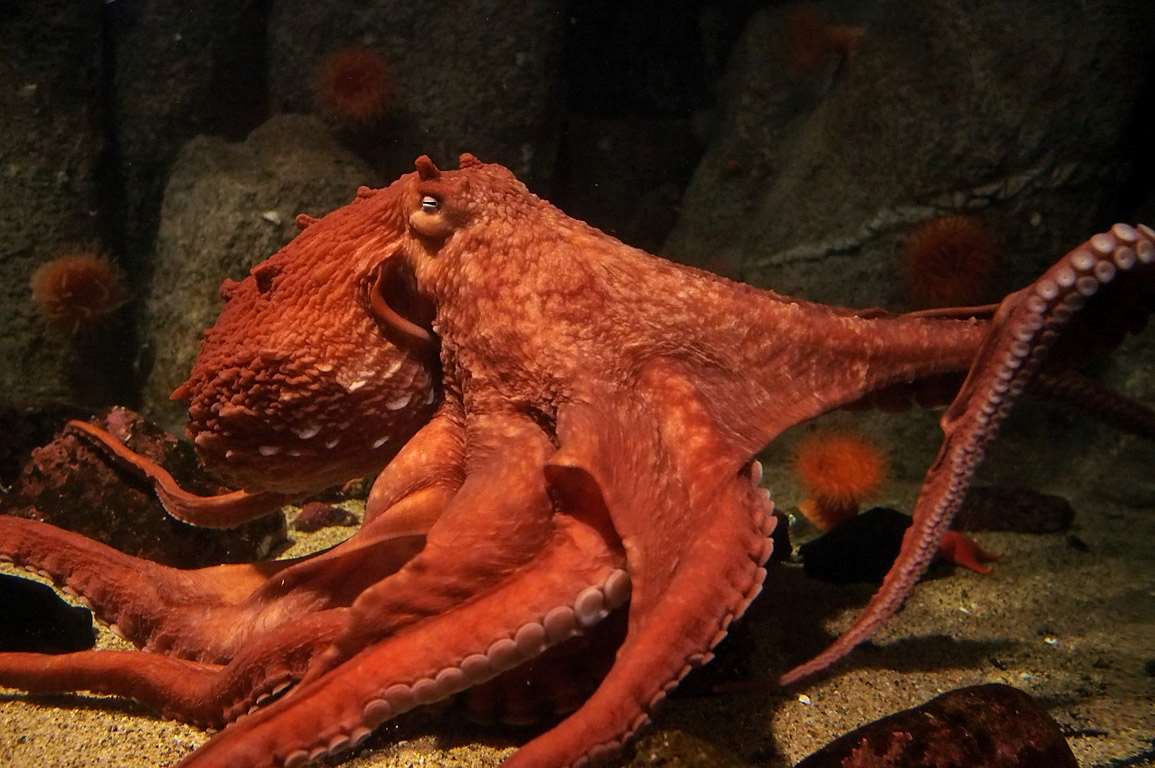
The Giant Pacific Octopus is recognised as the largest octopus species in the world, known for both its size and intelligence. Specimens have been recorded weighing up to 272 kg (600 lbs), with arm spans reaching an incredible 9 metres (30 feet). Typically found in the North Pacific, most adults average around 50 kg and measure approximately 5 metres in length. This species is famed for its ability to change colour and texture, as well as its high problem-solving skills. The octopus preys on crustaceans and fish and occasionally attacks sharks. With its remarkable adaptive camouflage and short life span of 3-5 years, the Giant Pacific Octopus is truly a marine marvel.
2. Seven-Arm Octopus
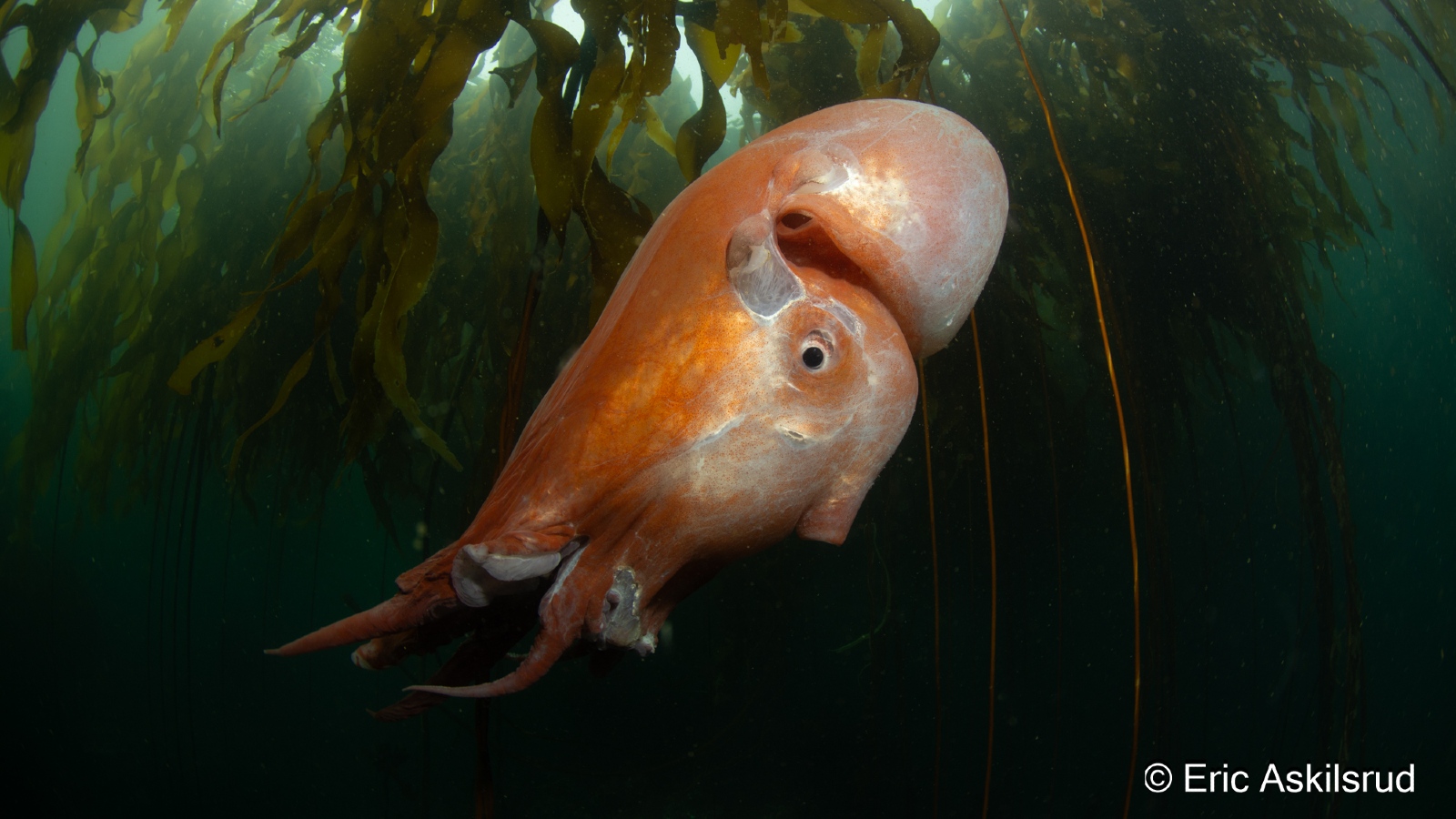
The Seven-Arm Octopus, Haliphron atlanticus, holds the second spot for size among octopuses. While its name suggests otherwise, it actually possesses eight arms, with one temporarily hidden for reproductive purposes. This species can reach weights of up to 165 kg (364 lbs) and lengths of about 11 feet. It has been found mainly in the Atlantic Ocean but is rarely sighted, making much of its biology a mystery. The seven-arm octopus is notable for its deep-sea habitat and is listed as a species of least concern.
3. Frilled Giant Pacific Octopus
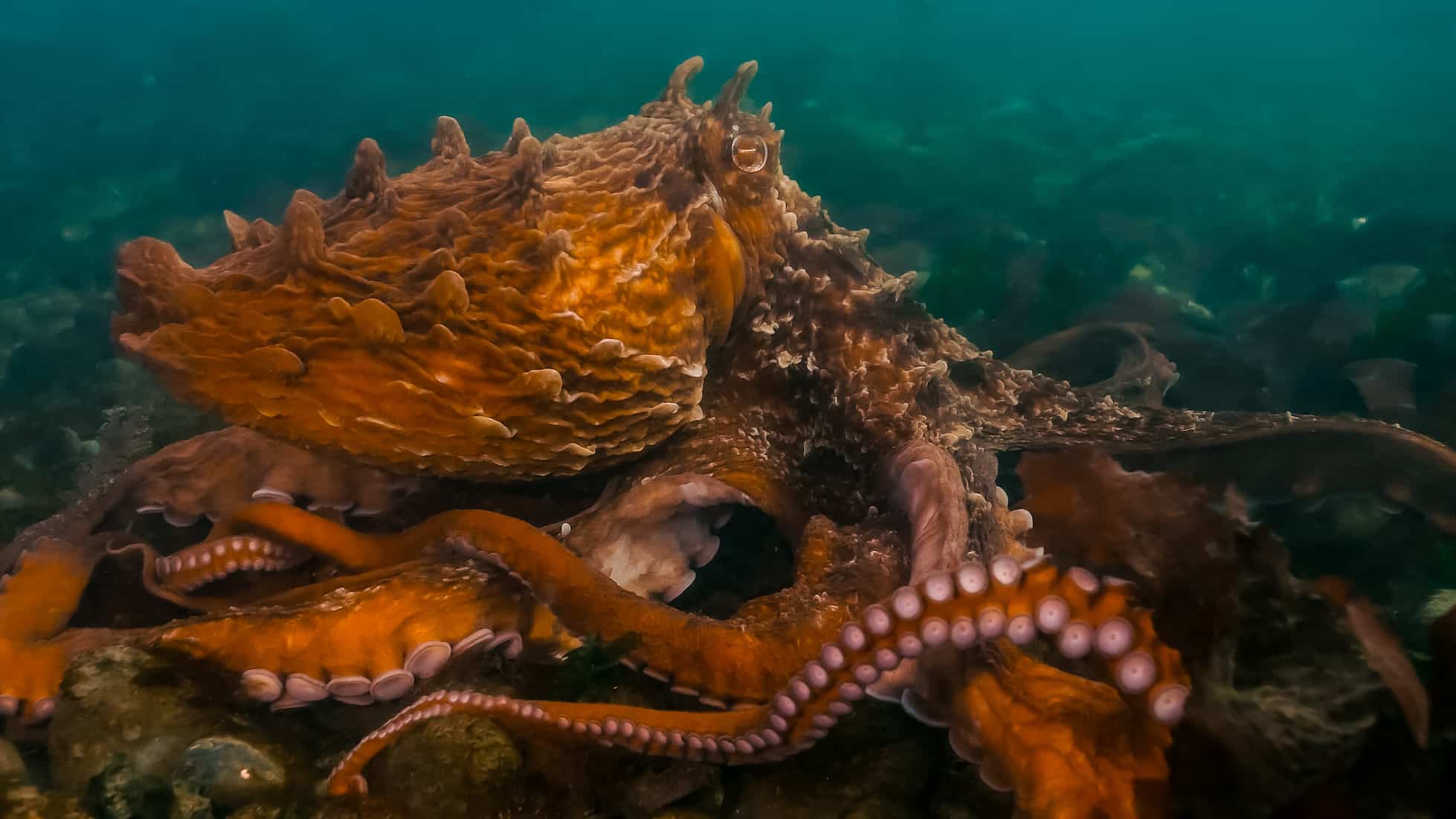
Only recently discovered, the frilled giant Pacific octopus is a close relative of the giant Pacific octopus, distinguished by frills of merged papillae across its arms and two white spots on its head. These deep-sea dwellers can weigh up to 110 kg (242 lbs) and reach lengths of 16 feet. Encountered around Prince William Sound in Alaska, they display similar intelligence and predatory habits to their relatives. Despite being newly described, their population status is still unknown, adding intrigue to this notable cephalopod.
4. Māori Octopus
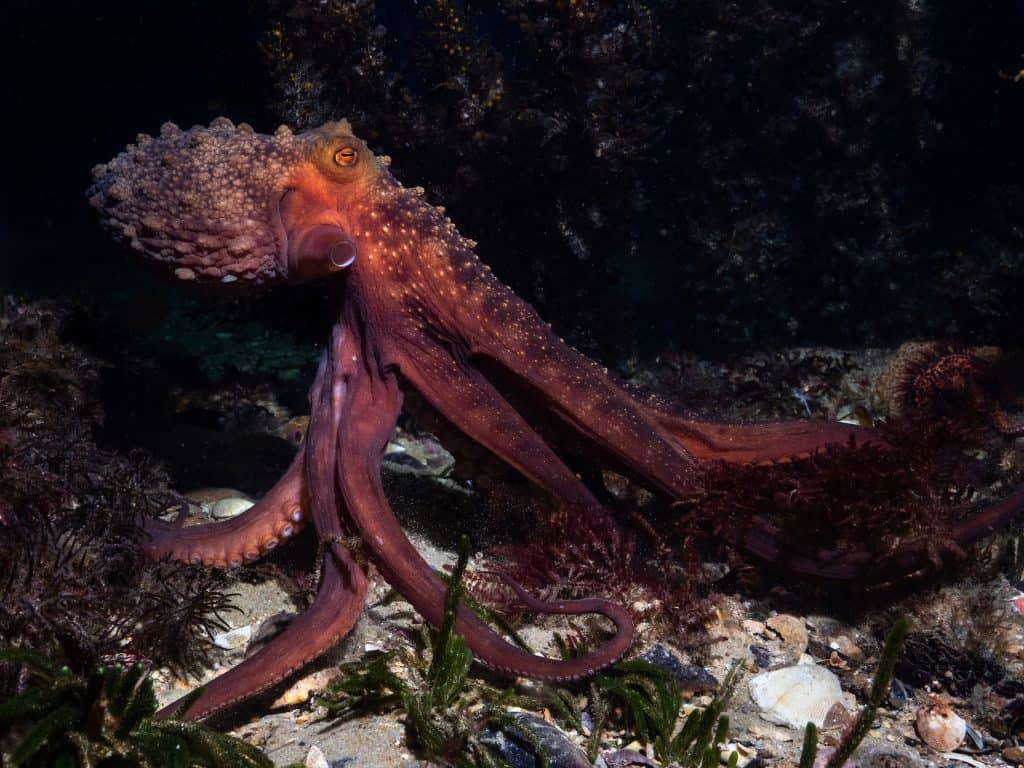
Native to New Zealand and southern Australian waters, the Maori octopus is infamous for its aggressive behaviour and impressive strength. Reaching weights up to 68 kg (150 lbs) and lengths of 13 feet, it is a strong hunter, preying primarily on crustaceans and fish. It's recognised for escaping from traps and even manipulating jars to access food, showcasing its intelligence.
5. Southern Giant Octopus

Found off the coasts of Namibia and South Africa, the Southern Giant Octopus is another member of the genus Enteroctopus. With weights averaging around 25 kg and lengths up to six feet, this species prefers sub-tidal zones and primarily feeds on deep-sea crabs. Though not as massive as the Pacific giant, it stands out for its relatively large size and distinctive habitat. The status of its population remains unevaluated, and it is one of the most significant cephalopod predators in southern African coastal waters.
6. Common Blanket Octopus
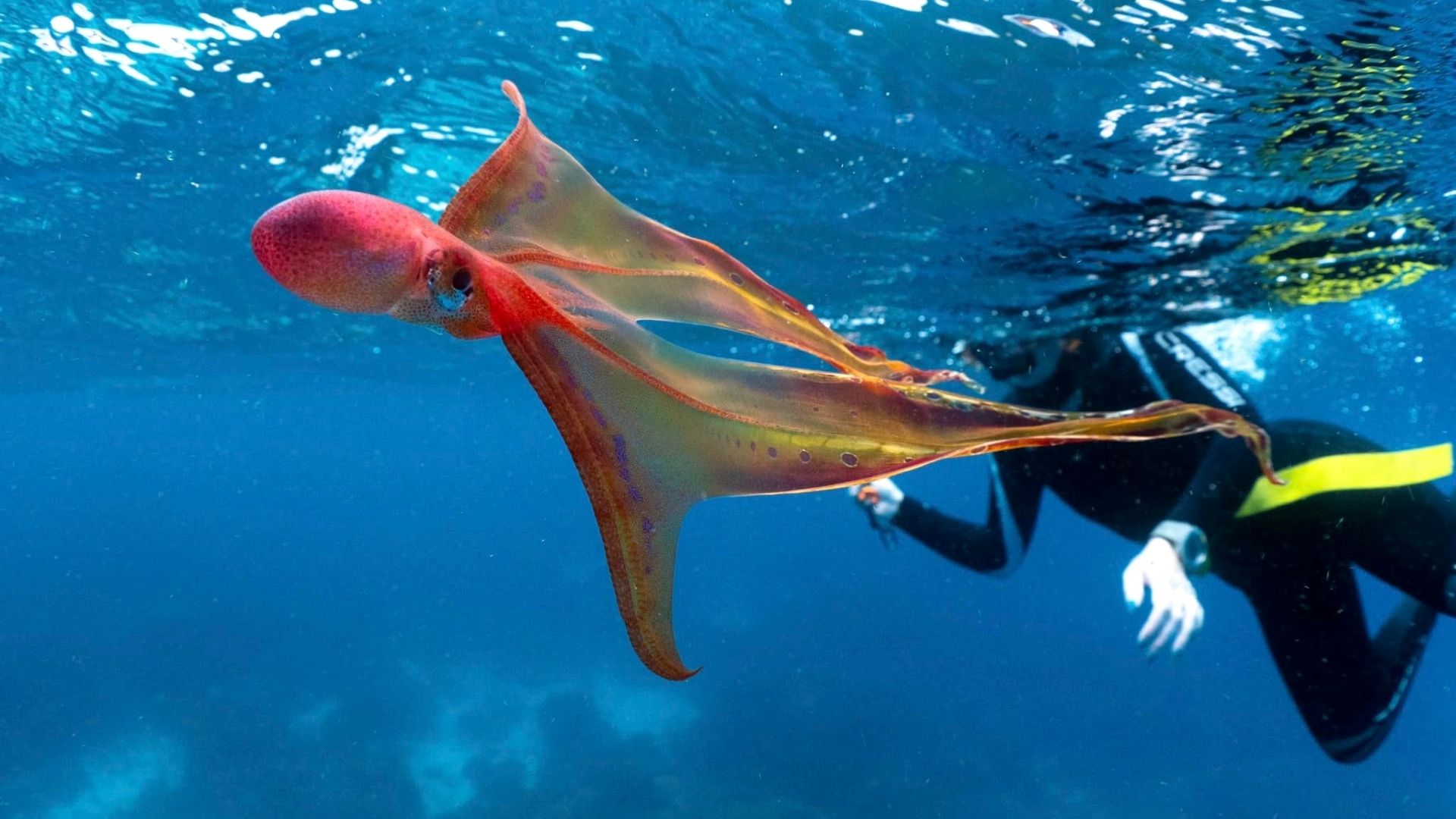
The common blanket octopus is famous not only for its size but also for its dazzling display of webbed arms that can extend up to 6.5 feet. Females are much larger than males, weighing up to 10 kg (22 lbs), and are found in tropical and subtropical Atlantic waters. Their blanket-like membranes are used for defence and mimicry, helping them evade predators. These octopuses are admired for their vivid colouration and unique defensive strategies, making them both beautiful and impressive as one of the largest octopus species.
7. Common Octopus
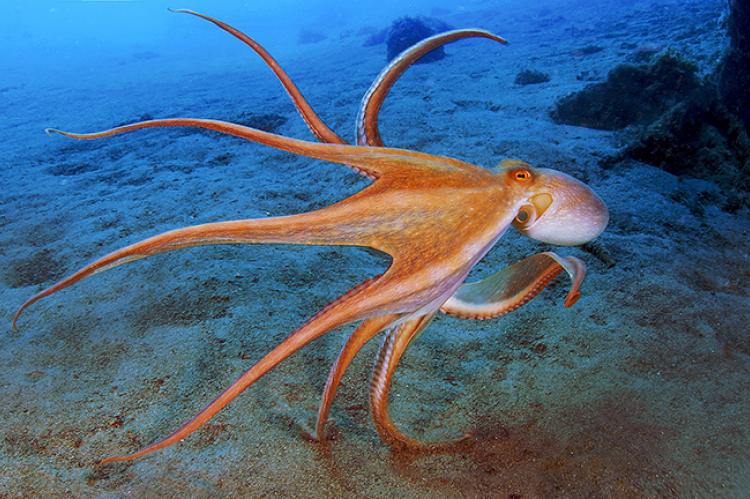
Octopus vulgaris, the common octopus, is among the most widely distributed and intelligent octopus species. Adult individuals can weigh up to 10 kg and grow to over a metre in length. Found across the globe, this species is renowned for its complex problem-solving abilities, rapid movement, and striking, colour-changing skin. Their diet is diverse, including crustaceans, small fish, and sometimes cannibalising other octopuses.
8. Dumbo Octopus
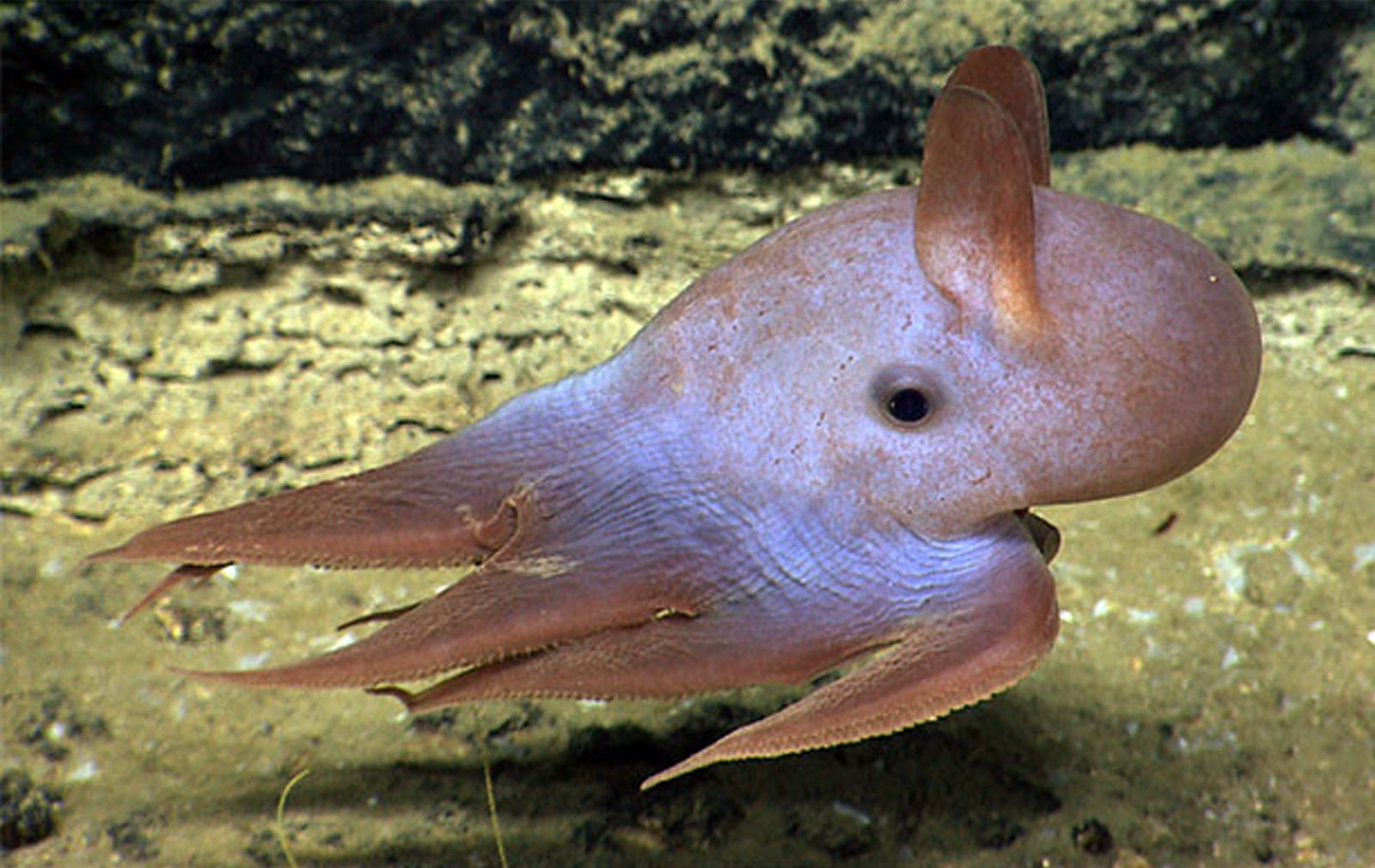
The Dumbo octopus, named for its ear-like fins, is a deep-sea creature that can grow to nearly 6 feet in length and weigh up to 6 kg. These octopuses belong to the genus Grimpoteuthis and inhabit oceanic depths often exceeding 2,000 metres. Their gelatinous bodies and distinctive fins give them an ethereal appearance. Little is known about their reproductive or feeding habits, but their adaptation to extreme environments makes them a subject of great scientific interest.
9. Yellow Octopus
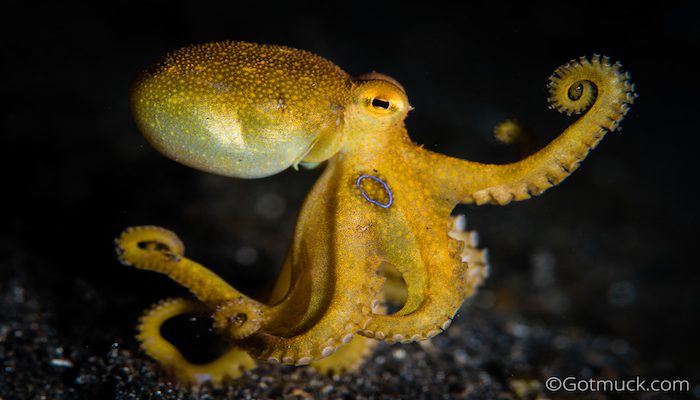
Native to the deep waters surrounding New Zealand, the yellow octopus is an elusive giant among octopuses. Estimates put its maximum recorded weight at 5 kg and length at 4.6 feet, though more may be discovered as research continues. Its vibrant yellow colouring and great depths distinguish it visually from other octopus species. Because only a few specimens have been found, much about its life and biology remains hidden, making it one of the most mysterious octopuses on this list.
10. Southern Red Octopus

The Southern Red Octopus, Enteroctopus megalocyathus, stands out for its striking red colour and paddle-shaped papillae. Found along the coasts of Chile and Argentina, it reaches approximately 4 kg in weight and 3.3 feet in length. As one of the most abundant species in its range, it plays a significant role both as predator and prey in South American coastal ecosystems.
11. North Atlantic Giant Octopus
The North Atlantic Giant Octopus is a large species in the Enteroctopus genus. It is related to the famous Giant Pacific Octopus. This species can grow to have an arm span up to 8 feet. It lives in the cold, deep waters of the North Atlantic Ocean. Scientists know little about its specific maximum weight. Like its relatives, it is likely very smart. It relies on its great size and camouflage for survival. It prefers deeper habitats than many other octopuses.
12. California Two-Spot Octopus
The California Two-Spot Octopus is named for the blue spots below its eyes. These spots look like large eyespots, or ocelli. It can reach an arm span of about 6 feet. This species is common along the Pacific coast of California. It often lives in shallow, rocky coastal areas. It is one of the most studied octopuses for intelligence. Researchers have shown it can solve complex maze puzzles. This octopus is a skilled hunter of crabs and clams.
13. Caribbean Reef Octopus
The Caribbean Reef Octopus lives in the warm, colourful coral reefs. Its habitat includes the Caribbean Sea and the Western Atlantic. It is known for its incredible ability to change colour and texture quickly. It uses this skill for both hunting and avoiding predators. This octopus is generally smaller, reaching about 2 feet in length. Its maximum recorded weight is around 3.3 pounds. It is very active during the day, which is unusual for an octopus.
14. Atlantic White Spotted Octopus
This octopus is distinctive for its very long, slender arms. Its arms can span up to 5 feet. Its body is smaller and covered in prominent white spots or bars. The species is found in temperate and tropical seas worldwide. It is also known as 'White-spotted octopus'. It is mainly active at night, making it a nocturnal hunter. It is a striking sight when spotted swimming.
15. East Pacific Red Octopus
The East Pacific Red Octopus is a small, solitary species. It is found in shallow waters along the East Pacific coast. Its maximum length is around 1.3 feet. The weight is typically less than one pound. It is known for its vibrant red-brown colour. This octopus is very good at changing its skin colour and texture. It is a fierce predator for its size. This species is often found hiding in rocky crevices and dens.
Which Is The Biggest Octopus In The World?
The largest octopus species in the world is the Giant Pacific Octopus (Enteroctopus dofleini). It typically weighs around 50 pounds (22.7 kg) with an arm span of up to 14 feet (4.3 metres). The largest recorded individual was truly immense, weighing nearly 600 pounds (272 kg) and measuring about 30 feet (9 metres) across. This highly intelligent mollusc lives in the cold waters of the North Pacific Ocean.
How Big Is A Goliath Octopus?
The term "Goliath Octopus" is not the official common name for a recognised species. Instead, the largest species is the Giant Pacific Octopus (Enteroctopus dofleini), which fits the "Goliath" description. Its average size is about 50 pounds (22.7 kg) and 14 feet across, but the biggest specimens have measured up to 30 feet (9 metres) in arm span and weighed close to 600 pounds (272 kg).
Which Country Has The Most Octopuses In The World?

It is difficult to determine which country has the highest natural population or density of octopuses. However, in terms of commercial fishing production, China is consistently reported as one of the largest global producers of octopus, followed by countries like Morocco, Mauritania, and Japan. Octopuses are found in all the world's oceans, with the distribution varying by species.
What Is The Deadliest Octopus In The Ocean?
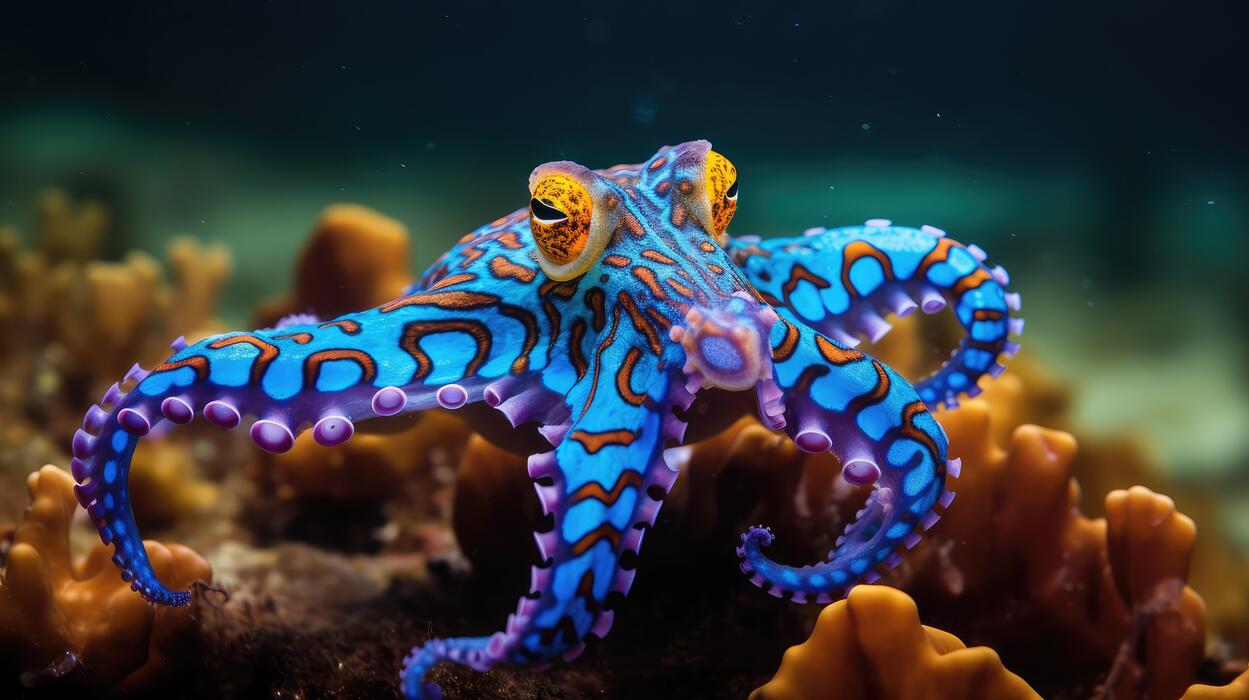
The deadliest octopus in the ocean is the Blue-Ringed Octopus (Hapalochlaena genus). Despite being small, about the size of a golf ball, its bite delivers a potent neurotoxin called tetrodotoxin (TTX), which can be lethal to humans. Symbiotic bacteria produce the venom and can cause respiratory failure, with no known antidote.
North Atlantic Giant Octopus
The North Atlantic Giant Octopus is a large species in the Enteroctopus genus. It is related to the famous Giant Pacific Octopus. This species can grow to have an arm span up to 8 feet. It lives in the cold, deep waters of the North Atlantic Ocean. Scientists know little about its specific maximum weight. Like its relatives, it is likely very smart. It relies on its great size and camouflage for survival. It prefers deeper habitats than many other octopuses.
California Two-Spot Octopus
The California Two-Spot Octopus is named for the blue spots below its eyes. These spots look like large eyespots, or ocelli. It can reach an arm span of about 6 feet. This species is common along the Pacific coast of California. It often lives in shallow, rocky coastal areas. It is one of the most studied octopuses for intelligence. Researchers have shown it can solve complex maze puzzles. This octopus is a skilled hunter of crabs and clams.
Caribbean Reef Octopus
The Caribbean Reef Octopus lives in the warm, colourful coral reefs. Its habitat includes the Caribbean Sea and the Western Atlantic. It is known for its incredible ability to change colour and texture quickly. It uses this skill for both hunting and avoiding predators. This octopus is generally smaller, reaching about 2 feet in length. Its maximum recorded weight is around 3.3 pounds. It is very active during the day, which is unusual for an octopus.
Atlantic White Spotted Octopus
This octopus is distinctive for its very long, slender arms. Its arms can span up to 5 feet. Its body is smaller and covered in prominent white spots or bars. The species is found in temperate and tropical seas worldwide. It is also known as 'White-spotted octopus'. It is mainly active at night, making it a nocturnal hunter. It is a striking sight when spotted swimming.
East Pacific Red Octopus
The East Pacific Red Octopus is a small, solitary species. It is found in shallow waters along the East Pacific coast. Its maximum length is around 1.3 feet. The weight is typically less than one pound. It is known for its vibrant red-brown colour. This octopus is very good at changing its skin colour and texture. It is a fierce predator for its size. This species is often found hiding in rocky crevices and dens.
Comments
All Comments (0)
Join the conversation